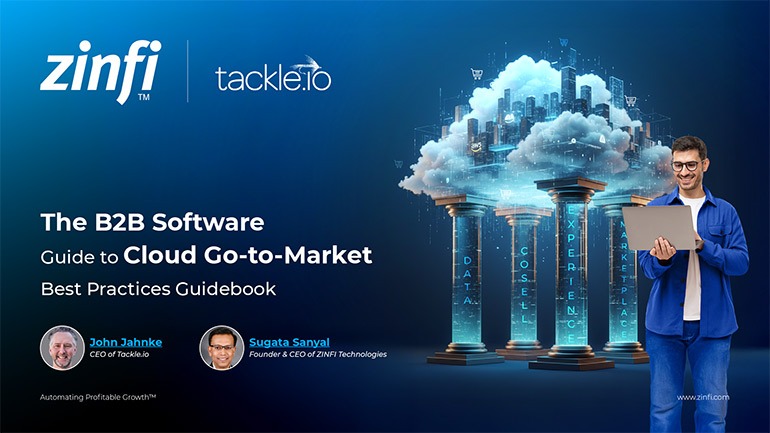Glossary - How to - Partner Relationship Management Best Practices
How to Implement Partner Relationship Management Best Practices?
Introduction
Understanding Partner Relationship Management (PRM)
Partner Relationship Management (PRM) refers to the strategies, methodologies, and tools that businesses use to manage relationships with their channel partners. These partners may include resellers, distributors, affiliates, and technology alliances that help expand a company’s reach. Effective PRM ensures streamlined communication, efficient collaboration, and mutual growth between vendors and partners.
In today’s digital business landscape, organizations rely on PRM to improve partner engagement, track performance, and maximize revenue generation. However, successful PRM requires adherence to best practices that optimize partnerships and create long-term value. By implementing structured PRM frameworks, businesses can ensure better alignment between their goals and those of their partners.
The Role of PRM in Partner Management Automation
With the rise of digital transformation, PRM has evolved to incorporate automation tools that simplify partner interactions and enhance operational efficiency. Modern PRM software enables businesses to onboard partners, manage incentives, track sales performance, and streamline marketing efforts seamlessly. Companies leveraging PRM solutions benefit from improved visibility, reduced administrative overhead, and stronger partnerships.
This guide explores the best practices for implementing PRM effectively, offering actionable insights into building and maintaining strong partner relationships.
Key Takeaways:
Establish Clear Partner Onboarding and Training Programs:
A structured onboarding process is crucial for integrating new partners into your ecosystem. Effective onboarding includes:
- Providing partners with comprehensive training materials, including e-learning modules and webinars.
- Defining clear expectations regarding roles, responsibilities, and performance benchmarks.
- Implementing a certification program to validate partner competencies and expertise.
- Offering a dedicated support team to assist partners in navigating systems and processes.
Ensuring a smooth onboarding experience enhances partner engagement and accelerates time-to-productivity.
Develop a Transparent and Fair Partner Compensation Model:
A well-structured compensation and incentives program encourages partners to remain committed and motivated. Best practices include:
- Defining commission structures that reward performance and business growth.
- Offering tiered incentives based on sales achievements and customer satisfaction.
- Providing rebates, co-marketing funds, and other financial incentives to drive engagement.
- Ensuring clarity in payment terms and reward structures to build trust and loyalty.
Implement Advanced PRM Technology for Seamless Management:
Leveraging a PRM platform ensures efficient collaboration and performance tracking. Consider the following features:
- A centralized partner portal with easy access to sales, training, and marketing resources.
- Automated deal registration and lead management to avoid channel conflicts.
- AI-driven analytics and reporting to track partner performance and optimize strategies.
- Integration with CRM, marketing automation, and ERP systems for seamless operations.
Foster Strong Partner Communication and Collaboration:
Effective communication strengthens partnerships and ensures alignment with business objectives. Best practices include:
- Regular business reviews and strategy sessions to address challenges and opportunities.
- Open communication channels such as dedicated partner account managers and chat platforms.
- Engaging partners in co-branded marketing campaigns and joint go-to-market strategies.
- Providing access to real-time data and insights for informed decision-making.
Measure Partner Performance and Provide Continuous Improvement Plans:
Monitoring and analyzing partner performance helps identify strengths and areas for improvement. Best practices include:
- Setting clear Key Performance Indicators (KPIs) such as revenue growth, deal size, and customer retention rates.
- Providing performance dashboards that offer real-time insights into sales trends and engagement levels.
- Conducting periodic partner assessments and offering feedback to optimize performance.
- Implementing a structured improvement plan that includes training, mentorship, and resource allocation.
Summary of Key Takeaways:
Implementing best practices in Partner Relationship Management ensures long-term success in channel partnerships. Key areas of focus include structured onboarding, transparent incentives, advanced PRM technology, effective communication, and performance measurement. By following these guidelines, organizations can strengthen partner relationships, drive revenue, and enhance overall business growth.
Key Examples:
- Automotive Manufacturing: PRM helps automotive manufacturers collaborate with dealerships and distributors. Key strategies include:
- Providing dealers with digital tools to streamline inventory and sales tracking.
- Offering tiered incentives for performance-based sales.
- Using PRM portals to deliver on-demand training for dealership staff.
- Consumer Electronics: Consumer electronics brands use PRM to manage retail partnerships and global distributors. Best practices include:
- Implementing online partner portals with product updates and marketing materials.
- Enabling automated deal registration to avoid channel conflicts.
- Providing real-time sales data analytics to optimize inventory and promotions.
- Energy Production: Energy companies rely on PRM to manage partnerships with distributors and service providers. Effective strategies involve:
- Ensuring compliance with regulatory requirements through PRM automation.
- Providing partners with detailed technical documentation and training.
- Establishing performance-based contracts with clear incentive structures.
- Financial Services: Banks and insurance companies use PRM to engage with independent brokers and financial advisors. Best practices include:
- Offering secure online portals for policy management and sales tracking.
- Providing customized commission structures based on sales performance.
- Hosting webinars and workshops to keep partners updated on financial trends.
- Food and Beverage: F&B brands manage distributors and wholesalers through PRM systems. Strategies involve:
- Implementing automated ordering systems for seamless transactions.
- Providing co-marketing funds to promote brand visibility.
- Tracking partner sales data to identify high-performing distributors.
- Healthcare Services: Healthcare organizations use PRM to manage relationships with clinics and pharmaceutical partners. Best practices include:
- Ensuring HIPAA compliance through secure partner communication platforms.
- Offering training on medical regulations and new product developments.
- Facilitating joint research initiatives with strategic partners.
- Information Technology: Tech companies leverage PRM for reseller and managed service provider (MSP) partnerships. Effective strategies include:
- Offering cloud-based PRM solutions for remote collaboration.
- Providing API integrations for seamless data sharing.
- Conducting certification programs to validate partner expertise.
- Pharmaceutical Development: Pharmaceutical firms collaborate with research institutions and distributors via PRM. Key approaches include:
- Enabling digital collaboration for clinical trial data sharing.
- Providing structured partner incentives for drug distribution.
- Implementing automated compliance tracking for regulatory adherence.
- Retail Industry: Retailers use PRM to enhance supplier and vendor relationships. Effective practices include:
- Establishing loyalty programs for high-performing retail partners.
- Providing AI-driven demand forecasting tools.
- Supporting omnichannel sales strategies through integrated PRM platforms.
- Telecommunications: Telecom providers leverage PRM for reseller and service provider partnerships. Strategies include:
- Offering tiered commissions for high-volume sales partners.
- Providing automated billing and support ticketing systems.
- Conducting joint marketing campaigns to drive customer acquisition.
Conclusion:
Implementing best practices in Partner Relationship Management enhances collaboration, drives partner engagement, and ensures sustainable business growth. By investing in structured onboarding, transparent incentives, PRM automation, effective communication, and performance measurement, businesses can maximize the value of their channel partnerships. Industry-specific applications of PRM demonstrate its flexibility and effectiveness across diverse sectors. Organizations seeking to optimize their partner networks should embrace these best practices to achieve long-term success.
Associated Keywords:
- PRM Strategies
- Partner Engagement Best Practices
- Channel Partner Management














